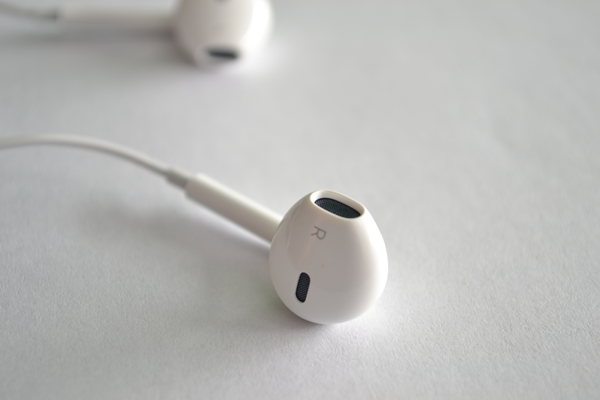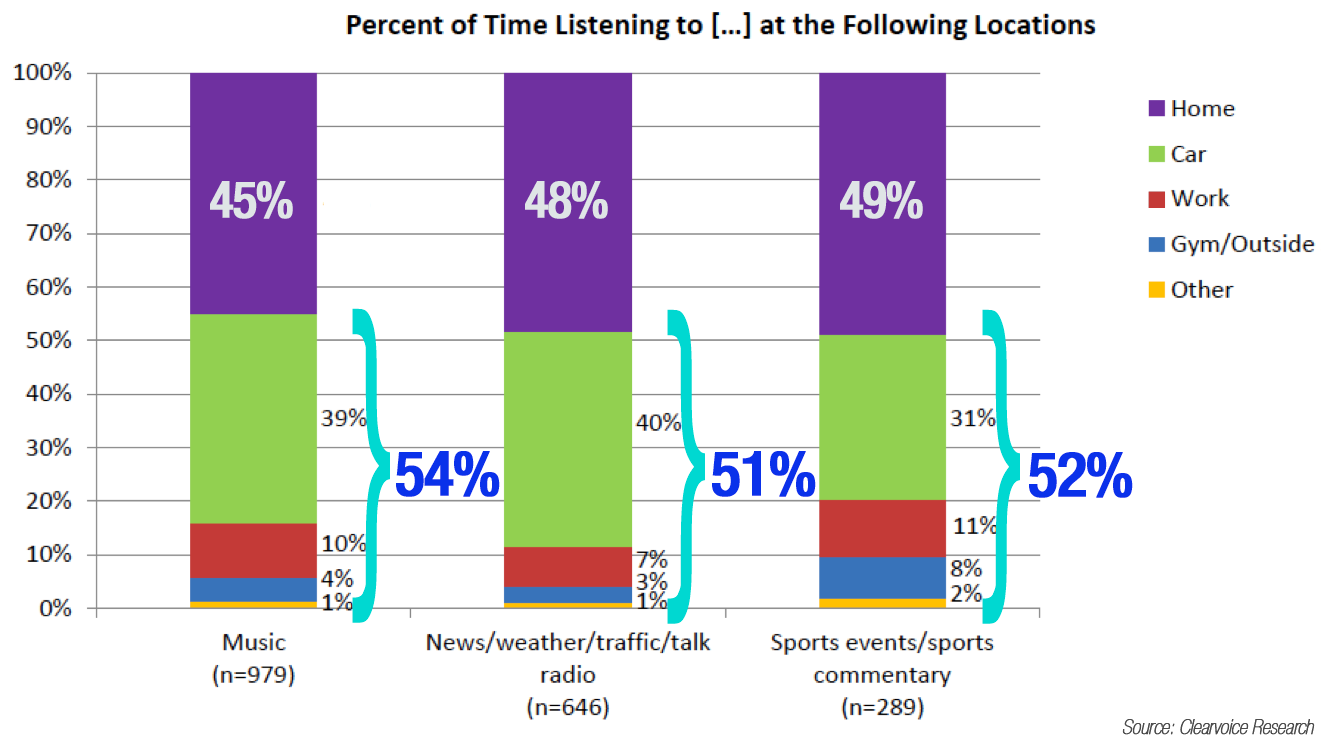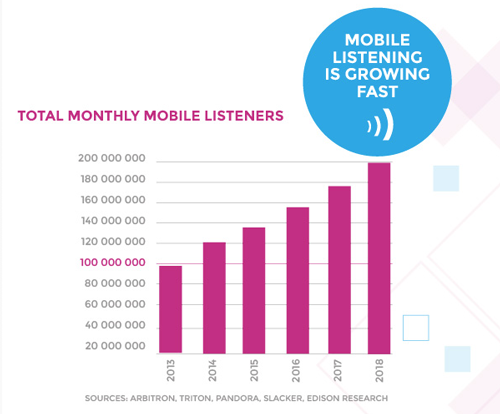 Whether you are talking about terrestrial broadcast radio or Internet radio, it has become a story about ultramobile consumers. These consumers are typically listening from a mobile device, but more specifically the listening behavior is hands free, eyes free audio consumption. This may seem obvious – audio content shouldn’t require visual or manual attention. However, we see advertising models in audio listening today that ignore this reality.
Whether you are talking about terrestrial broadcast radio or Internet radio, it has become a story about ultramobile consumers. These consumers are typically listening from a mobile device, but more specifically the listening behavior is hands free, eyes free audio consumption. This may seem obvious – audio content shouldn’t require visual or manual attention. However, we see advertising models in audio listening today that ignore this reality.
Audio Consumption is Most Often Screenless
Data show that consumers are listening to audio content while on the go. More specifically, they are listening to audio content while engaging in other activities that require the attention of their eyes and hands. This ultramobile behavior becomes relevant when we consider what type of advertising will effectively engage consumers.
Analysis by Clearvoice Research shows that more than half of radio time spent listening (at least 52%) takes place when consumers can only hear the audio. This was never an issue for broadcast radio because it has always been constrained to one-way communication with consumers.

When audio streaming came to computing devices, there was an immediate attempt to replicate the two-way interaction and conversion methods successful in other digital media. For a while this worked relatively well. When audio was primarily streamed to desktop computers, there was a good probability of exposure to visual creative. After the introduction of the smartphones, everything changed. Listening to digital audio streams migrated quickly to mobile devices and occurred during ultramobile activities such as driving, walking, exercising or working. With over 79% of streaming now occurring on mobile and the streaming market growing by 32% annually, digital mobile is the new listening environment.
Beyond Brand Awareness, Conversion for a Large Market
 As I have presented previously, ultramobile listeners are a large market. If you break down data from Edison, Arbitron and Triton, you can see that mobile accounts for about 98 million consumers each month. The Clearvoice data show us that a little over half of time spent listening to Internet radio takes place while consumers are ultramobile.
As I have presented previously, ultramobile listeners are a large market. If you break down data from Edison, Arbitron and Triton, you can see that mobile accounts for about 98 million consumers each month. The Clearvoice data show us that a little over half of time spent listening to Internet radio takes place while consumers are ultramobile.
Considering that this year’s Infinite Dial Report from Edison Research and Triton suggests consumers are spending over 13 hours per week with online radio, that translates into 3.7 billion hours of ultramobile listening each month. At current ad loads, this suggests approximately 22 billion ad impressions are created each month for consumers who cannot interact with a screen. For marketers looking to drive conversions, mobile is where audio is heading and ultramobile behaviors are becoming the most common listening environment.
So what does this mean for advertisers? Adage recently cited a report from eMarketer that 59.1% of digital ad dollars are focused on direct response and not branding. Digital is known to be an effective conversion channel with direct response accounting for almost $30 billion of the $50 billion ad market. If we know that digital audio is increasingly a mobile phenomena and advertisers look to digital for direct response, audio publishers need ad formats that can drive conversion for marketers. We also know from behavioral research that touch-driven conversion faces many challenges in a mobile listening environment.
Driving Conversion Through a Voice Click
This is where the voice click introduced by XAPP Ads comes into play. It allows for direct response conversions by voice even when listeners cannot access a screen for a touch click. I always encourage business leaders to look at the numbers for guidance. Mobile audio is growing rapidly and the advertising dollars are following the listeners. For example, Pandora saw a 59% increase in mobile revenue in the past year and they have been a leading indicator for the market for the past several years.
In this new environment, audio publishers need to optimize their ad inventory to effectively monetize ultramobile listening. This is true for pure play digital streaming, as well as for broadcast radio moving to expand their digital presence. When you consider your direct response ad formats, you should lead with a tool that is useful in nearly all listening scenarios – the voice click. With XAPP Ads, we just might have a solution you will find appealing.
